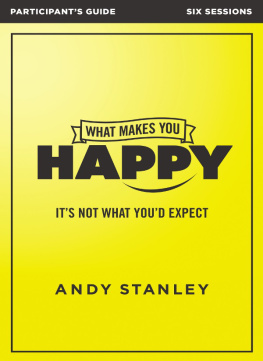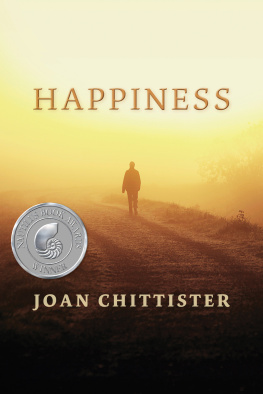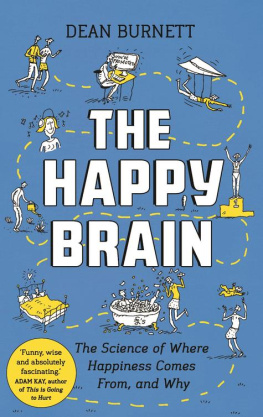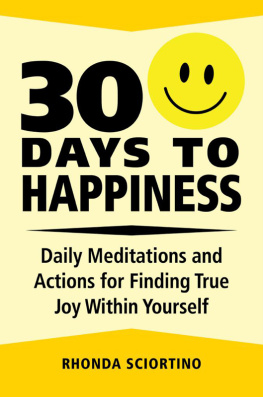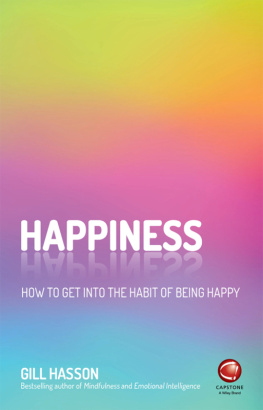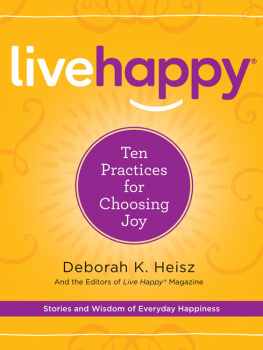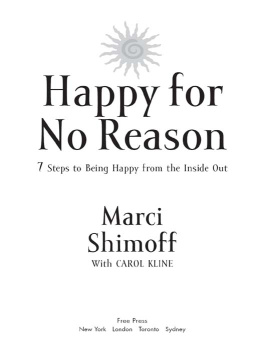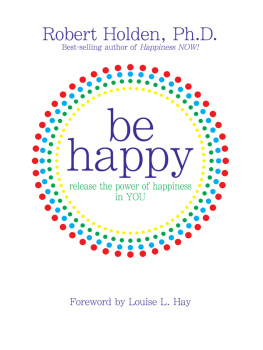The Five Paths to Happiness
JAVIER RAMON BRITO
Published by BookBaby. Pennsauken, NJ
Copyright 2016 Javier Ramon Brito Moncada
All rights reserved.
The author of this book does not dispense medical advice or prescribe the use of any technique as a form of treatment for physical or medical problems without the advice of a physician, either directly or indirectly. The intent of the author is only to offer information of a general nature to help you in your quest for happiness and emotional and spiritual well-being. In the event that you use any of the information in this book for yourself, which is your constitutional right, the author and the publisher assume no responsibility for your actions.
Cover art licensed by Elenarts/Can Stock Photo.
Printed in the United States of America.
ISBN 978-1-48357-831-6
to
my beloved Father
who taught me freedom and self-confidence
to
my beloved Mother
who taught me love, kindness and sensitivity
to
my beloved Son
who fills my life with joy and makes me proud
Contents
We all want to live a happy life. But most of the time we look for happiness in the wrong place or take the wrong approach to it. When it comes to happiness, there is really no one-size-fits-all recipe that works for everybody. We are all different. What makes someone happy may not be the ideal for another person. This is why in this book I offer you five different paths to happiness.
Why five paths? Why not three, or six, or nine? Because according to modern psychology, most people can be fitted into five categories. Because, according to ancient Eastern wisdom, there are five elements that govern the universe. Because the holistic systems that are used for healing, like Traditional Chinese Medicine and Ayurveda, are based on the interaction of five elements in the human body, mind and emotions.
The five alternative paths that I present to you in this book come from a methodical observation of how the five elements that rule the universe can be translated into practical knowledge and choices for our daily lives. Interestingly, these five elements also correspond to the five main characters or constitutional types of people. They all have different traits and different potentials that rightly understood give you the key to living your life according to your own constitutional and emotional structure.
I call these types, simply, the Ether type, the Air type, the Fire type, the Water type and the Earth type. While Psychology has studied the various character structures of people, its approach has been primarily behavioral and not directly linked to the five elements. And while ancient oriental disciplines in India and China have gifted us with the theory of the five elements, their approach has been focused primarily on the important spiritual and medical sides of it, as in the case of Ayurveda and Traditional Chinese Medicine.
This book takes into account and blends the key concepts and insights of Psychology, Ayurveda and Traditional Chinese Medicine, but the main focus of this book is neither psychotherapy nor medical healing. The focus of this book is related to happiness and how you can use the knowledge of the five elements in a practical way that may serve you in your personal quest for happiness, on a daily basis. A kind of happiness that is consonant with your unique emotional nature. And this is relevant because you want to live your life, not somebody elses life. You want to live your dream, not somebody elses dream.
This book intends to be insightful, easy to read and practical. But the most important thing is that it accomplishes the purpose of helping you envision the best use you can make of the strengths and talents of your own personal constitution and the best ways to overcome the challenges that your unique path may present to you along your journey.
Each of the five paths to happiness that I offer you in this book is approached in a way that shows you clearly the basic strengths, the basic challenges and the basic solutions that you can put into practice to be happier while pursuing the path in question.
The final chapter on how to increase your happiness dispels the myths that surround the achievement of happiness in our modern society and analyzes the true essence of happiness. It offers a sound alternative to the rat race in which many people are trapped.
By knowing the five paths and understanding the true essence of happiness, people have a choice. You can be happier and live a happier life. This book shows you how.
The idea of choosing to work with five distinctive paths to happiness may sound capricious at first sight. After all, if people are so different among them one could naturally think that there could exist as many different approaches and paths to happiness as the number of people on this planet. However, philosophical and psychological reasons support the view that there are five great categories or patterns that can be clearly identified regarding human behavior.
Human Behavior Analysis
The analysis and explanation of human behavior has occupied the minds of great sages, philosophers, physicians, psychologists and scientists from time immemorial. More than five thousand years ago, ancient cultures had a clear cosmology that understood the basic principles that govern the universe and everything in it, including human behavior. One basic tenant of this cosmology was a system based on the interaction of five elements: Ether, Air, Fire, Water and Earth.
By the time of Hippocrates, the father or Western medicine, human behavior was explained in terms of the influence of four body fluids called humors which were blood, bile, phlegm and black bile. This approach gave rise to the classification of human temperament in four types that were known and explained by Galen as sanguine, choleric, phlegmatic and melancholic. These types were, in their substance, still related to the elements of air, fire, water and earth, respectively. But the Ether element had disappeared from the picture.
Although Plato spoke about Ether in his dialogue Timaeus, he referred to it as a most translucent kind of air. Aristotle did refer to a fifth element in his treatise On the Heavens, assigning it to the celestial bodies, as the matter of which the heavens are made, but not to terrestrial affairs or human behavior.
The four temperament concept as an explanation of human behavior remained valid in the Western civilization for centuries. The great physiologist Ivan Pavlov, who discovered the conditional reflex, still studied and further detailed the characteristics of the four temperament types, for which he even used different names but without altering the substance.
Interestingly, the Ether element, the most intangible element which was missing in the four temperament concept, started somehow to appear again in the analysis of human behavior, although not properly as an element or temperament or even being mentioned by its name. It started to come back through the door of psychoanalysis as one of the components of the human psyche.
Character Structure in Psychology
Sigmund Freud, the father of psychoanalysis, explained his view that the human personality consists of three systems, which he named the


